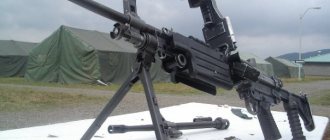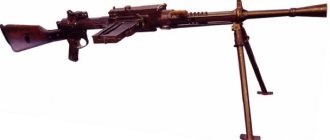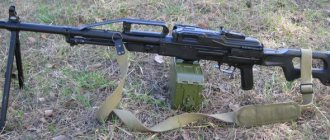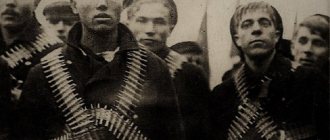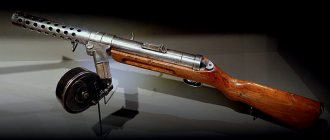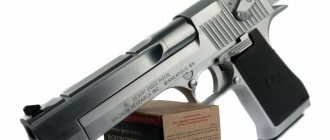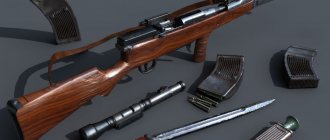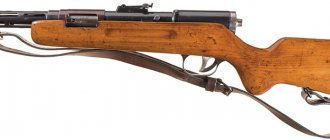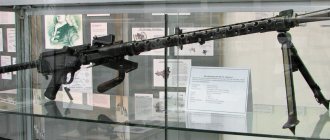Creeping Romanization
In 2007, Romania joined the European Union, and by that time the course of European integration had already been announced in the Republic of Moldova. Romanian President Traian Basescu decided to take advantage of the moment and came up with an initiative for the “joint entry” of both states into the EU. Of course, subject to the creation of one single one.
But this proposal was indignantly rejected by the Moldovan leadership. Then Basescu was not at a loss and relied on “creeping Romanianization”, offering Romanian citizenship to everyone who wanted it. It has now become easy to obtain the coveted freedom of movement throughout Europe: just admit that you are Romanian. The offer was more than relevant. Due to the lack of sources of income in their homeland, the majority of the working population was forced to look for jobs abroad.
As a result, a queue formed for EU passports. About 800 thousand Moldovans became their “lucky” owners, without thinking that Romania is increasing the share of its citizens in the Republic of Moldova only for the subsequent annexation of these territories on a national basis. And providing Moldovan students with grants to obtain higher education at Romanian universities is very similar to training representatives of the future elite loyal to Bucharest.
Are the ideas of unionism utopian?
Unira is not just a matter of national self-determination. It is highly political in nature: the statehood of the Republic of Moldova and its possible liquidation are at stake. At the beginning of the year, the unionists united into a single political bloc, and recently announced that they were going to nominate their candidate for the presidential elections in November.
In general, the ideas of Uniri do not find a response in the hearts of Moldovans, but are more used by parties as a political tool.
The distrust of Moldovan citizens towards government officials and the chronically unfavorable economic situation in the country have led to the fact that an increasing number of people see emigration as the only way to solve all problems. Over 30 years, the population of the republic has decreased by almost a million people - a whole generation of people has grown up in the country who know that their future is abroad.
Socio-economic problems that the country’s leadership does not want to solve may well lead to part of the electorate joining such a radical project as “unionism.”
GoWikipedia - BESA - Wikipedia
Material from Wikipedia - the free encyclopedia
(redirected from "Besa") The current version of the page has not yet been verified by experienced participants and may differ significantly from the version verified on February 18, 2017; checks require 8 edits. The current version of the page has not yet been verified by experienced participants and may differ significantly from the version verified on February 18, 2017; checks require 8 edits. Type Country Service history In service Wars and conflicts Production history Designer Developed by Manufacturer Years of production Options Characteristics Weight, kg Length, mm Barrel length, mm Cartridge Caliber, mm Operating principles Rate of fire, rounds/min Muzzle velocity, m/s Type of ammunition
| BESA | |
| easel and tank machine gun | |
| Czechoslovakia Czechoslovakia | |
| Czechoslovakia Czechoslovakia, UK UK | |
| The Second World War | |
| Vaclav Holek | |
| 1936 | |
| Birmingham Small Arms Company | |
| 1939—1966 | |
| Mark I, Mark II, Mark III | |
| 21 (empty) | |
| 1100 | |
| 740 | |
| 7.92 × 57 mm, 15 × 104 mm | |
| 8 mm | |
| removal of powder gases | |
| 450-550 (minimum), 750-850 (maximum) | |
| 823 | |
| belt for 225 cartridges (7.92 mm) belt for 25 cartridges (15 mm) | |
| BESA on Wikimedia Commons | |
BESA is a British tank machine gun, a copy of the Czechoslovak air-cooled ZB-53 machine gun, which used belts for power and was called TK vz. 37 in the Czechoslovak Army. Named after the BSA (Birmingham Small Arms Company), which produced the weapon and entered into a contract with the Czechoslovak arms manufacturer for licensed production of the ZB-53 in the UK. Used by the British Army as a tank machine gun, installed to replace the Vickers water-cooled heavy machine gun. Although the BESA required more tank space to install, it was reliable and powerful. Adopted by the Ministry of Defense in 1938, produced since 1939 in several modifications.
Production and Application
Mk VI tank fitted with a quad BESA machine gun. 7.92 x 57 mm cartridges used by the BESA machine gun. The
British Armed Forces used British .303 British cartridges for their rifles and machine guns, while the ZB-53 machine gun was chambered for the German 7.92 x 57 mm cartridge. In Great Britain they planned to abandon flanged cartridges and switch to waferless ones, but in the conditions of hostilities a full-fledged transition was impossible. Birmingham Small Arms and the Ministry of Supply recognized that from an industrial, technical and logistical point of view, converting the .303 British cartridge would be much more onerous than using the original caliber cartridges. Moreover, the supply chain of the Royal Armored Corps was different from that of other parts of the British Army. As a result, the British preferred to use foreign ammunition: the British had enough captured German and their own ammunition.
American-made armored cars and tanks used 0.30 caliber (7.62 mm) Browning machine guns, while British armored cars and tanks were equipped with BESA machine guns. They used 225 round steel belts. The barrel of the BESA tank machine gun had a handle for changing the hot barrel, a tubular flash suppressor and a front sight. The mechanism operated by removing powder gases from the barrel. The gas piston was connected to a return spring, and when the piston moved back, the spring was held by a vertical bolt and compressed. The rear sight could be adjusted to 275 and 457 meters.
The machine guns were produced in several variants, and one of the most common, the Mark II, entered service in June 1940. It had a fire mode switch: it could be used to fire at high speed (from 750 to 850 rounds per minute [rpm]) when fighting at short range or attacking fixed targets, or at low speed (from 450 to 550 h/min) when fighting at long range or attacking in an area. As the fighting progressed, the machine gun was modified, which speeded up its production and reduced costs. Three modified models - Mark II*, Mark III and Mark III* - were accepted into service in August 1943. The Mark II* model used new simplified parts but was interchangeable with the Mark II. The Mark III and Mark III* models had the same simplified parts as the Mark II*, but were not interchangeable with the Mark II, and did not have a fire selector. The Mark III* had a maximum rate of fire of 450 to 550 rpm and was suitable for long-range combat, while the Mark III, with a maximum rate of fire of 750 to 850 rpm, was suitable for short-range combat[1].
The previous versions of the Mark I, Mark II and Mark II* were declared obsolete and withdrawn from service in 1951, and all Mark III variants were converted to the Mark III*. In 1952, the Mark III/2 version appeared with a new gunner and shield. The Mark III/3 model, introduced in 1954, was a further development of the Mark III/2 (the barrel and muzzle were replaced, the cooling holes were expanded, which allowed the use of belts with mixed ammunition). Post-war Mark III/2 and Mark III/3 models remained in service until the late 1960s. The modifications also differed in the cocking method.
BESA ammunition
7.92x57mm BESA ammunition
| Designation | On duty | Differences |
| Cartridge SA Ball 7.92 m/m Mark Iz | May 1939 - November 1941 | Purple flange, Iz index on the sleeve |
| Cartridge SA Ball 7.92 m/m Mark IIz | September 1941 - 1966 | Purple flange, index IIz on the sleeve |
| Cartridge SA Tracer 7.92 m/m G Mark Iz | October 1939 - November 1941 | Red flange, GIZ index on the sleeve |
| Cartridge SA Tracer 7.92 m/m G Mark IIz | September 1941 - 1945 | Red flange, index GIIZ on the sleeve |
| Cartridge SA Tracer 7.92 m/m G Mark 3z | April 1945 - 1966 | Red flange, index G3Z on the sleeve |
| Cartridge SA Armor-Piercing 7.92 m/m W Mark Iz | March - November 1941 | Green flange, WIZ index on the sleeve |
| Cartridge SA Armor-Piercing 7.92 m/m W Mark IIz | September 1941 - 1966 | Green flange, index WIIZ on the sleeve |
| Cartridge SA Incendiary 7.92 m/m B Mark Iz | 1942—1966 | Blue flange, BIZ index on the sleeve |
15 mm BESA machine gun
The British also used a copy of the Czechoslovakian ZB vz.60 as a tank machine gun - a 15-mm BESA machine gun weighing 57 kg, using cartridge belts. He could fire both single shots and bursts. It was put into service in June 1940: it was installed on 129 Mk VIC light tanks, Humber Mk I, Mk II and Mk III armored vehicles. Until 1949, more than 3,200 machine guns were produced, until the 15-mm BESA machine gun was removed from service[2]. He used 15 x 104 mm cartridges, the bullet weighed 75 grams. The initial bullet speed is 818.3 m/s, the rate of fire is 450 rpm[3]. A number of machine guns fell into the hands of the Germans, and they were transferred to the SS troops. Due to the limited range of available Czech bullets and their low combat characteristics, the Germans used the same bullets for loading shots as for the MG 151/15. Since these bullets were essentially projectiles, i.e. had a leading belt, then to place the projectile in the existing chamber they shortened the neck of the Czech cartridge case by the width of this belt (3 mm), after which the length of the cartridge case of the converted ammunition was 101 mm [4]. The BESA 15mm machine gun used 25-round belts to fire, which limited its rate of fire; but its shooting with single cartridges is more accurate than firing in bursts[5].
see also
Notes
Do Moldovans want to go to Romania?
It is noteworthy that the issue of creating a single Moldovan-Romanian state is being discussed to a greater extent outside of Moldova. For residents of the country, pressing problems are more important - in particular, finding a source of livelihood. Non-governmental organizations supporting the ideas of Uniri are almost not present in the public space, since the idea of unification with Romania is not very popular among the population of the republic. The only exception is Tinerii Moldovei (“Youth of Moldova”), which regularly holds actions in an attempt to attract public attention.
Suntem alături de colegii noștri din Asociația Tinerii Moldovei pentru a sărbători împreună împlinirea celor 101 ani de la Unirea Basarabiei cu România! Jos orgoliile, sus Unirea! pic.twitter.com/K5kxz15sPN
— Vlad Bilețchi (@VladBiletchi) March 30, 2019
The apolitical nature of the electorate was a natural consequence of the fact that the parties were mired in squabbles with opponents. According to sociological surveys, about 60% of respondents were against the unification of the country with Romania and the renaming of the Moldovan language to Romanian. Only 25% would be in favor.
On March 27, 2020, the “Centennial March” took place in Chisinau, which was supposed to demonstrate the support of the residents of Moldova for the idea of unification. It was widely covered by Western media, but the event failed to become a mass event: despite the unionists’ propaganda campaign, no more than 7 thousand people took to the march. At the same time, almost all residents of Chisinau annually participate in events dedicated to Victory Day.
Even in the midst of a pandemic on May 9, 2020, townspeople found a way to preserve this tradition.
